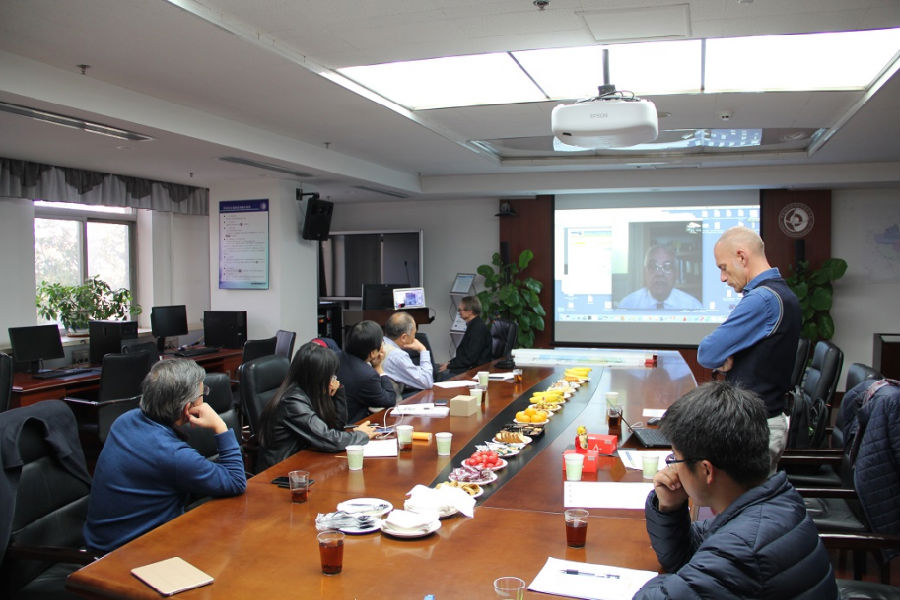Institute of Earthquake Forecasting, China Earthquake Administration (IEF CEA) held a teleconference on the China Seismic Experimental Site (CSES), discussing on the international cooperation with the Institute of Earthquake Prediction Theory and Mathematical Geophysics, Russian Academy of Sciences (IEPT RAS) and University of Trieste (UNITS), in the afternoon of Saturday, October 27, 2018, in Beijing.
Vladimir Kossobokov of IEPT RAS, Fabio Romanelli of the Department of Mathematics and Earth Sciences, University of Trieste (DMES UNITS), Zhongliang Wu, and his Chinese colleagues from the IEF CEA and of the China Earthquake Networks Center (CENC), and Giuliano Panza of University of Trieste (through teleconference) attended this meeting.
It is recognized that within the scientific agenda of the CSES in Sichuan-Yunnan region, seismic hazard assessment is an important topic. This agenda has multi-disciplinary (including seismology, geophysics, geology and engineering seismology, among others), multi-scale (from the specific regions which could be identified to have higher seismic hazard, to the whole experimental site with area about 800,000 km2, further to the whole continental China and beyond), and multi-step (from the characterization of regional tectonics, to the assessment of time-dependent seismic hazard, further to the scenario-based strong motion synthesis, and finally to the engineering applications) features.
The CSES will be ready to provide: 1) instrumental and historical earthquake catalogues; 2) active faults data; and 3) structural models data, by the end of 2018; it will be ready to provide: 1) earthquake parameters (focal mechanisms, and other related seismic source parameters), and 2) deformation data, by the end of 2019. The CSES will also provide the updated seismic zonation (by 2017) and other SHA parameters (e.g. Spectral Acceleration at selected periods) available for the target area, as the baseline for comparison.
In its top-level design, the CSES plays the role of an arena for different approaches to test and compare with each other. Preliminarily, three issues are to be worked on together: 1) Short-term work: the identification of hazardous sites prone to strong earthquakes, using different approaches based on Unified Scaling Law for Earthquakes (USLE), Morpho-Structural Zonation (MSZ) and pattern recognition of ‘seismogenic nodes’, by the end of 2019; 2) Intermediate-term work: in a showcase region which is identified by the annual consultation to have higher probability of strong earthquakes within the next year, multi-scenario based NDSHA seismic hazard analysis be conducted at regional scale, by the end of 2021; and 3) Long-term work: in the whole experimental site, multi-scenario based NDSHA seismic hazard analysis be conducted at local scale for selected sites, by the end of 2023.
As per the scientific exchange and outreach, it is agreed that the CSES hold international workshops similar to the Advanced Schools on Understanding and Prediction of Earthquakes and other Extreme Events (2011) and Nonlinear Dynamics and Earthquake Prediction (2009) held with success in the last years at the Abdus Salam International Centre for Theoretical Physics (ICTP) in Trieste (Italy), in Yunnan/Sichuan or Beijing. The CSES will be preparing facilities and funding. Experts from the 3 parties (and beyond) will be endorsing the related activities.





